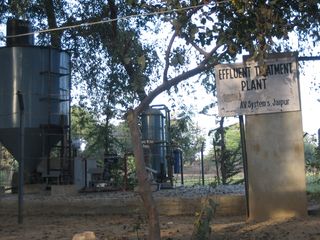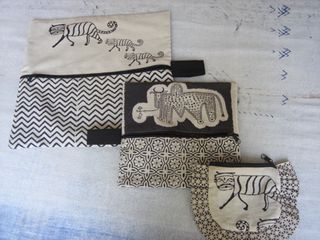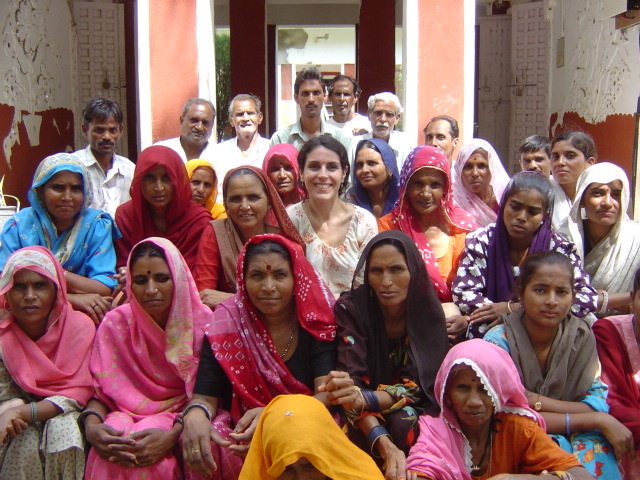....excerpts from the book The Freedom of Having Nothing, Ecodesigner and Modern Nomad
After three long years of absence it feels like time to re-visit Dastkar women’s craft cooperative at Ranthambore. Ujwala has been continually asking me to return, playing with my emotions, “Katell, this is your home here, just come.” I do wonder how I could have spent three years without visiting my extended family here. I’m happy to see all the women again – many new women have joined – and the Kendra is now providing craftwork opportunities for 300 women.
Only three years earlier the cooperative functioned with six pedal sewing machines and constant power failures. Now they have a generator, a brand new effluent treatment plant, a room full of fast-stitching industrial (electric) sewing machines, an overlocker and a buttonholer and a piping machine, and a steam iron (they used to get by with a heavy old iron, filled with coal). Everybody knows how to use all these machines. There has been a mini revolution here, helped by financial grants from some major organizations.

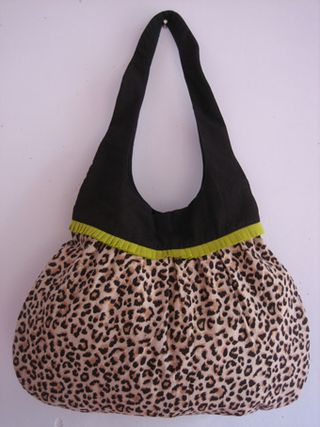
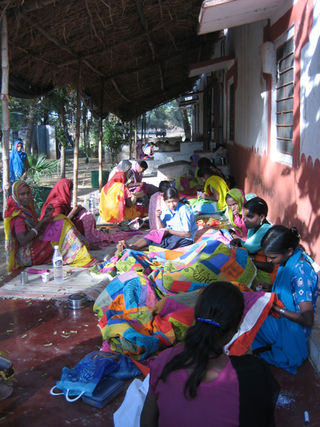
The early days, the romantic view of the Kendra with all the women sitting on the grass doing patchwork and embroidery, are gone. The time of simplicity and old-fashioned ways of working – that drove me a little crazy at times, I must admit – are over. These new machines clash with the old buildings and the rural women. Now they work with chemical dyes that lack the earthy richness of the vegetable and mineral dyes. I feel a pinch in my heart, nostalgia for the early years. But this is India’s development, too. I’m proud for their upgrade – now they can work more professionally and sell to the commercial markets, and maybe even export. And the Kendra has become a member of Craftmark, a labeling guarantee that certifies products as authentic Indian handcrafts, supporting a heritage over 4,000 years old.

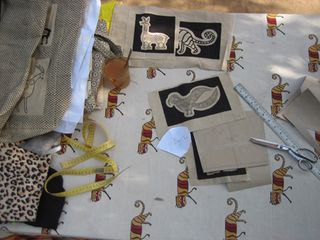
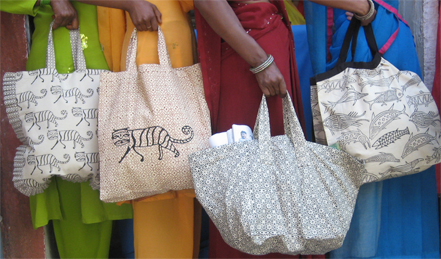
In ten days I design a black and white collection of accessories, bags, and pouches. Their existing range of products, with such a mixture of colors from the earthy natural dye colors to the screamingly loud chemical dye colors, is all a bit too much. But using only natural black dye on white cotton fabric, with the noble-looking Dastkar block print patterns and motifs, counterbalances all that color. The new collection is ready for the photo shoot and this time I ask all the women who have made the bags to be arm models, their loud saris in apple green, fuchsia, yellow, scarlet in the background. The women have fun being involved in the whole process. I think this collection will seduce the foreign safari-goers coming into the shop.(...) The work here is nourishing and fulfilling.
